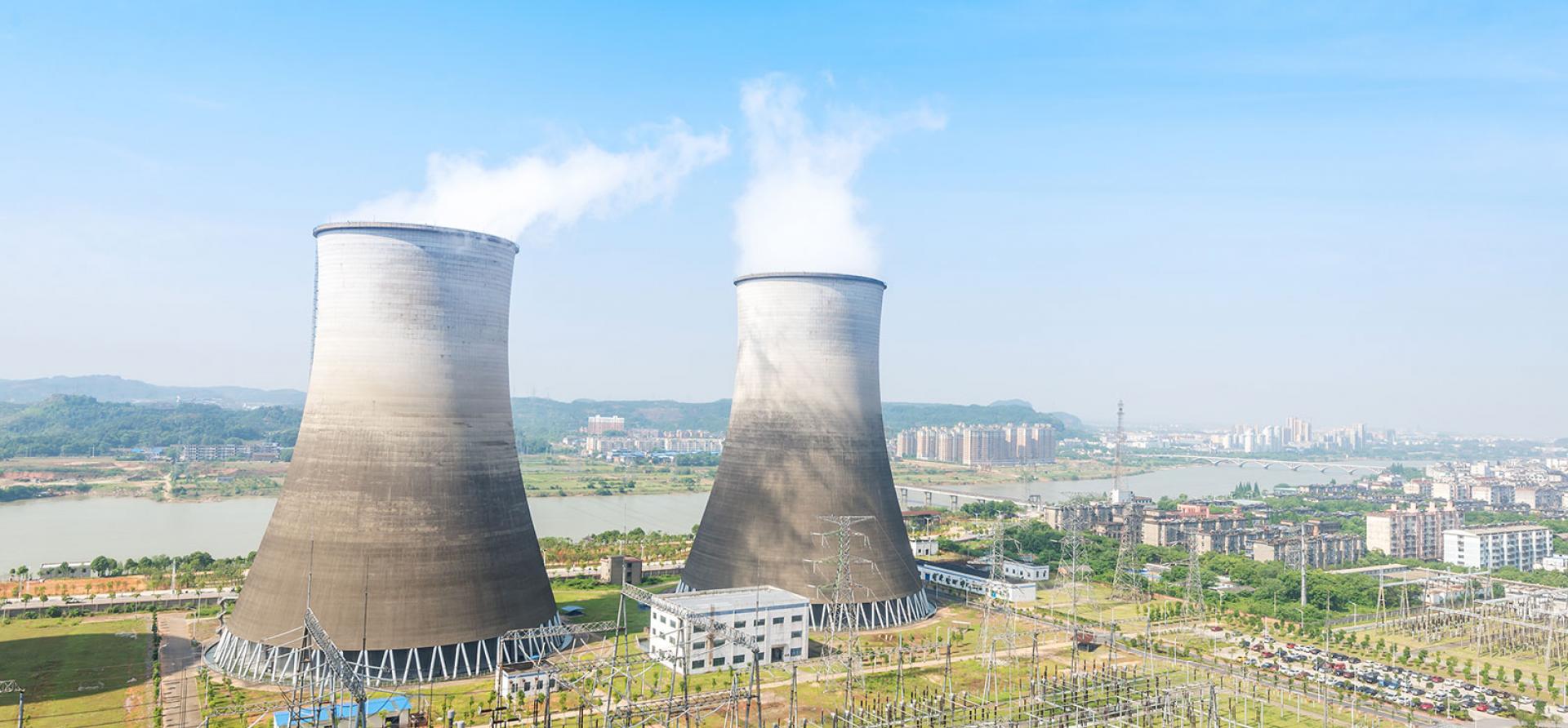Global capital acknowledges stranded asset risks

Global capital markets are continuing to move towards the exit when it comes to financing, insuring or investing in thermal coal and coal-fired power plants used to generate electricity.
Financial institutions are moving on thermal coal
The International Energy Agency (IEA) has made it clear that unabated thermal coal use must cease globally by 2050 if warming is to be held below 2°Celsius. In response, financial institutions are moving on thermal coal first. Over 112 globally significant banks and insurers now have formal coal exit policies in place that are invariably accompanied by a commitment to align with the Paris Agreement.
In this note, we examine the building momentum in the financial sector to drive alignment with the Paris Agreement.
TO-DATE IN 2019 THERE HAVE BEEN 35 NEW OR TIGHTER POLICY ANNOUNCEMENTS BY SIGNIFICANT BANKS AND INSURERS RESTRICTING COAL FINANCING, building on 31 polices announced in 2018. Half have been new financial institutions making their first formal commitments to begin aligning with the Paris Agreement.
Coal exit policies have now been announced by 17 of the world’s biggest insurers
In November 2019 UniCredit, the largest bank in Italy announced a new environmental, social and governance (ESG) target, stating: “UniCredit has committed to fully exit thermal coal mining projects by 2023. A new coal policy prohibits new projects in thermal coal mining and coal fired power generation”. UniCredit also committed to the Paris Agreement Capital Transition Assessment (PACTA) project for international banks to develop a methodology to assess their lending portfolios against the Paris Agreement’s goals. Additionally, UniCredit has signed up to external monitoring requirements via the Taskforce for Climate-related Disclosures (TCFD), aimed at encouraging firms to align financial disclosures with investors’ needs and taking into account climate risk.
Coal exit policies have now been announced by 17 of the world’s biggest insurers controlling 46% of the reinsurance market and 9.5% of the primary insurance market. Insurers have also divested coal from roughly $8.9 trillion of investments – over one-third (37%) of the industry’s global assets. To date at least 35 companies have taken action, up from 15 companies since 2017, with $4 trillion in assets under management.
In October 2019 Axis Capital announced a new policy commitment limiting investment and underwriting of thermal coal and oil sands in support of the transition to a low-carbon economy. This is the second U.S. insurer to move, following Chubb’s exit in July 2019.
The first South Korean insurer has just announced a formal coal exit policy
And at the start of December 2019, the first South Korean insurer announced a formal coal exit policy. DB Insurance, one of the three biggest South Korean general insurance companies, has committed to stop investing in new coal projects in a move aimed to support global efforts to tackle the climate crisis. Two private South Korean asset managers – the Korean Teachers’ Credit Union and the Public Officials Benefit Association – joined DB Insurance to also exclude new coal investments. This builds on announcements by two Korean public pension funds – the Teachers’ Pension and Government Employees Pension System who announced their coal exit policies in 2018.
Half of the coal exit announcements in 2019 have been a tightening of existing policies. In November 2019, BNP Paribas built on its previous coal exit policies, announcing a timeframe for a complete coal exit “to cease all its financing related to the thermal coal sector in 2030 in the European Union, and worldwide by 2040.”
BNP IS ALREADY THE LARGEST LENDER TO RENEWABLE ENERGY IN EUROPE, but the bank defined a new financing target of €18bn by 2021. This is a clear matching of commitments, progressively reducing fossil fuel lending with an offsetting expanded lending commitment to sustainable alternatives.
“Firms ignoring the climate crisis will go bankrupt”
AXA followed suit with a similar policy upgrade in November 2019, stating: “AXA’s new climate policy increases the stringency of its existing coal policy, tackling not only coal expansion and installed coal capacity, but also committing to a long-term total coal exit.”
However, the strongest policy alignment with the Paris Agreement to date comes from the European Investment Bank (EIB), which in November 2019 announced: “The EIB will end financing for fossil fuel energy projects from the end of 2021”.
As with BNP, the EIB will accelerate lending to technology solutions to ensure a just transition. Over the last five years, the EIB has provided €65bn of financing for renewable energy, energy efficiency, and energy distribution.
CENTRAL BANKS ARE INCREASINGLY COMING UNDER SCRUTINY, reflecting the Bank of England Governor Mark Carney’s repeated assertions that stranded asset risks could be globally systemic, firms ignoring the climate crisis will go bankrupt, and there needs to be a whole of financial system solution.
In November 2019, the new European Central Bank Chief Executive Officer, Christine Lagarde declared a goal to make climate change a “mission-critical” priority for the central bank as part of a comprehensive strategic review.
The Central Banks’ Network for Greening the Financial System (NGFS) recently announced its’ expansion from 34 to 46 members in just 18 months, with the latest additions being the Banco Central de Costa Rica, Comisión Nacional Bancaria y de Valores (Mexico), Guernsey Financial Services Commission, and the New York State Department of Financial Services. The NGFS’s first report, “Climate change as a source of financial risk” notes the inclusion of the People’s Bank of China on the Steering Committee, with the notable absence of the U.S.
In November 2019, Riksbank’s Deputy Governor Martin Floden announced the Swedish central bank had divested bonds from Australia and Canada due to the financial risks of those country’s excessive carbon intensity, stating: “We are now doing this by rejecting issuers who have a large climate footprint.”
Global equity investors have announced a new campaign to ‘call out’ the role of the Big Four global audit firms
Also in November 2019, French Finance Minister Bruno Le Maire said France aimed to stop all coal investments in Europe by its financial institutions within 10 years. Le Maire also stressed the need for compulsory environmental standards reporting and the enforcement of European Union rules regarding its planned “taxonomy” of green financial products.
The International Monetary Fund’s (IMF) Managing Director, Kristalina Georgieva has been increasingly vocal about the intertwined nature of climate risk and financial stability, noting “climate change is an existential threat” that must be addressed for the world to achieve sustainable growth.
THE TASKFORCE FOR CLIMATE RELATED DISCLOSURES (TCFD) HAS LIKEWISE SEEN SIGNIFICANT GROWTH IN GLOBAL SUPPORT, with Mark Carney reporting in October 2019 that “four-fifths of the top 1,100 global companies are now disclosing climate-related financial risks in line with some of the TCFD recommendations.”
And as a clear endorsement of the significant shift in thinking in the last year since Marubeni Corp announced their landmark coal exit policy, Japanese TCFD signatories have increased from 9 to 199 in just over a year and now have a market cap of almost US$2 trillion.
The commitment to the Paris Agreement comes in many guises. On the positive side, the RE100 is a commitment by leading global corporates to transition to 100% renewable energy, on average by 2028. As of November 2019, over 200 global leaders have signed on with membership increasing one third in 2019 alone.
In Australia, the first anniversary of the domestic launch of the RE100 was celebrated by the announcement that National Australia Bank and Macquarie Group had both joined QBE, ANZ, CommBank, and Westpac – the six largest domestic financial institutions, in RE100. In September 2019, Macquarie Group announced a commitment to invest US$20bn in renewable energy infrastructure globally within five years, one of the five largest renewable investments commitments globally.
THE GROWTH IN CLIMATE BONDS IS ON TRACK FOR ANOTHER RECORD YEAR IN 2019, with issuances to-date standing at US$182bn, having surpassed the 2018 full year total of US$171bn by the end of October 2019. One highlight showing the expanding capacity of the global green bond market was that Ørsted had priced subordinated green hybrid capital securities of €600m with a hundred years maturity at an initial yield of just 1.75% annually.
Once a technology driven disruption becomes probable, the immediacy of market pricing can be severe
At a time when domestic financial institutions are constraining new credit, the renewable infrastructure sector of India significantly expanded its access to the global green bond market in the second half of 2019, with new issues by Adani Green (US$362m), Greenko (US$350m after just completing a US$950m issue) and Azure Power (US$350m).
Financial sector service providers are also starting to see increased scrutiny. Global equity investors have announced a new campaign to ‘call out’ the role of the Big Four global audit firms – Deloitte, Ernst & Young, KPMG, and PricewaterhouseCoopers – for consistently ignoring the financial risks of climate change in their annual report audit sign-offs, while the International Accounting Standards Board (IASB) has similarly failed to address this issue.
Signs suggest 2019/20 is a tipping point for thermal coal
To conclude, most forecasters of global energy markets point to the multi-decade life of energy infrastructure assets, suggesting the rate of change will be progressive but incremental in nature, rather than rapid. IEEFA takes an entirely different perspective.
FINANCIAL MARKETS ARE SOMETIMES SLOW TO ACT, but once a technology driven disruption becomes probable, the immediacy of market pricing can be severe and abrupt.
Signs suggest 2019/20 is a tipping point for thermal coal, even if the financial sector is yet to price in what an alignment with the Paris Agreement means for wider fossil fuel use.
It is worth considering that the largest private coal company in the world is Peabody Energy. Having dusted US$18bn of shareholder wealth in its 2016 bankruptcy, Peabody proclaimed its phoenix-type return to the equity markets in 2017. Yet 2019 has seen its shares again collapse 70% in value.
Investors appear more reticent to catch the falling knife a second time.
Tim Buckley is IEEFA’s director of energy finance studies, Australia/South Asia
Related articles:
IEEFA update: Global coal power set for record fall in 2019
IEEFA update: Smart countries adapt to finance industry’s exodus from coal
IEEFA update: Norway’s GPFG sovereign fund to invest up to $14bn in unlisted renewables











